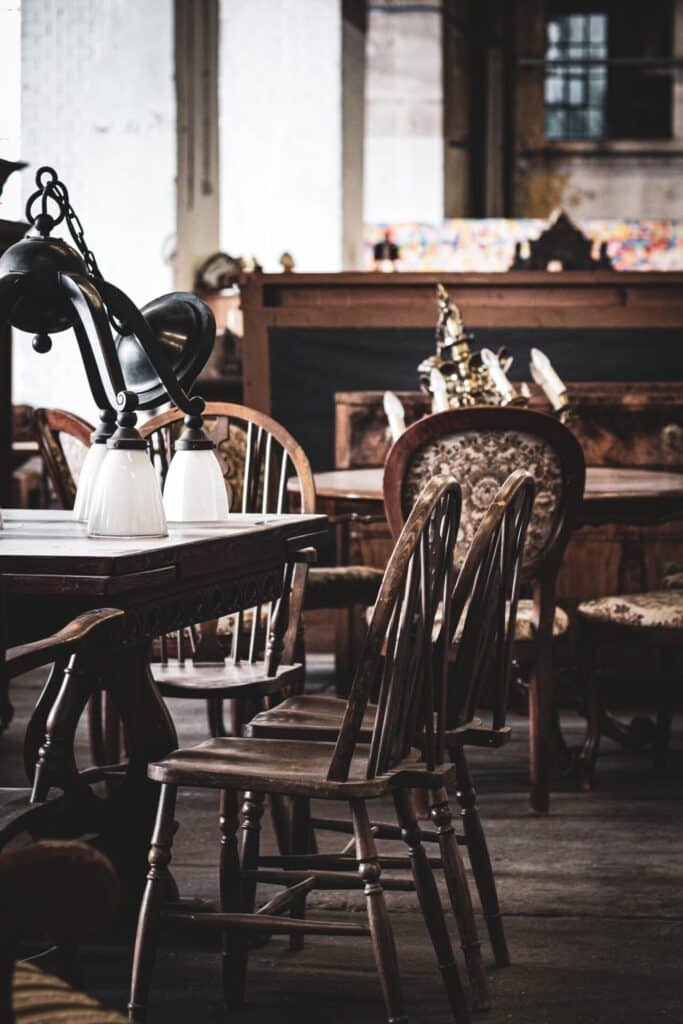Antique furniture encompasses a vast array of styles and designs that have evolved over different eras. Each era holds its own unique characteristics, reflecting the prevailing artistic, cultural, and social influences of the time. Exploring the various eras of antique furniture allows us to appreciate the craftsmanship, aesthetics, and historical significance of these timeless pieces. Here is an overview of some of the notable eras in antique furniture history:
1. Ancient Furniture: This era covers furniture produced in ancient civilizations such as Egypt, Greece, and Rome. Egyptian furniture was often ornate and made from precious materials like gold and ebony, featuring intricate carvings and motifs. Greek furniture showcased elegant and symmetrical designs, while Roman furniture was influenced by Greek and Etruscan styles, known for its practicality and functionality.
2. Medieval Furniture: Furniture during the Middle Ages was primarily influenced by Gothic architecture and design. This period is characterized by heavy and sturdy construction, intricate carvings, and religious motifs. Chairs, tables, and chests were common furniture pieces, often made from oak and adorned with decorative elements like tracery and quatrefoils.
3. Renaissance Furniture: The Renaissance era marked a revival of art, science, and culture. Furniture of this time was characterized by rich ornamentation, harmonious proportions, and classical motifs. The Italian Renaissance saw the rise of luxurious furniture made from walnut and ebony, featuring detailed inlay work and architectural elements. In Northern Europe, furniture designs focused on robust construction, intricate carvings, and elaborate embellishments.
4. Baroque Furniture: Baroque furniture emerged in the 17th century and was characterized by opulence, grandeur, and dramatic forms. This era saw the use of richly carved wood, gilded accents, and sumptuous upholstery. Furniture pieces were often large and imposing, featuring bold curves, intricate details, and motifs inspired by nature and mythology.
5. Rococo Furniture: Rococo furniture, which flourished in the 18th century, is known for its graceful and playful designs. It emphasized asymmetrical shapes, delicate curves, and intricate ornamentation. Rococo furniture featured motifs such as scrolls, shells, and foliage, and was often made from lighter woods like beech and walnut. The style exuded elegance, lightness, and a sense of whimsy.
6. Neoclassical Furniture: Neoclassicism emerged in the late 18th century as a reaction against the ornate and extravagant styles of the Baroque and Rococo periods. Inspired by classical Greek and Roman designs, neoclassical furniture embraced simplicity, symmetry, and clean lines. Furniture pieces were often made from mahogany or satinwood and featured straight legs, geometric motifs, and restrained ornamentation.
7. Victorian Furniture: The Victorian era, spanning the 19th century, witnessed a diverse range of furniture styles due to the Industrial Revolution and global influences. Early Victorian furniture showcased Gothic Revival and Renaissance Revival styles, featuring dark woods, heavy ornamentation, and intricate carvings. As the era progressed, furniture designs shifted towards the lighter and more delicate aesthetics of the Rococo Revival and the Arts and Crafts movement.
8. Arts and Crafts Furniture: The Arts and Crafts movement, led by influential figures like William Morris, aimed to revive traditional craftsmanship and embrace simple, functional designs. This era, which emerged in the late 19th century, emphasized handmade furniture, natural materials, and traditional joinery techniques. Oak was a favored wood, and designs focused on simplicity, rectilinear forms, and the beauty of natural grain.
9. Art Nouveau Furniture: Art Nouveau emerged in the late 19th century and embraced organic forms, flowing lines, and decorative motifs inspired by nature. Furniture pieces featured sinuous curves, whiplash
patterns, and intricate floral and plant-inspired designs. Art Nouveau furniture often incorporated exotic materials such as stained glass, inlaid wood, and sculptural elements. This era celebrated a total design concept, where furniture, architecture, and decorative arts were harmoniously integrated.
10. Art Deco Furniture: The Art Deco movement emerged in the 1920s and 1930s and is characterized by sleek, geometric forms, bold colors, and luxurious materials. Influenced by the Machine Age and the discovery of new materials like chrome and Bakelite, Art Deco furniture featured streamlined shapes, stepped patterns, and vibrant accents. It embraced a modern, glamorous aesthetic that epitomized the spirit of the Roaring Twenties.
11. Mid-Century Modern Furniture: Mid-century modern furniture, popular from the 1940s to the 1960s, emphasized simplicity, functionality, and a connection with nature. It embraced clean lines, organic shapes, and innovative materials such as molded plywood, fiberglass, and steel. Designers like Charles and Ray Eames, Arne Jacobsen, and Hans Wegner created iconic furniture pieces that are still highly sought after today.
12. Contemporary and Modern Furniture: Contemporary furniture encompasses designs from the late 20th century to the present day. This era features a wide range of styles, from minimalist and Scandinavian designs to eclectic and avant-garde creations. Contemporary furniture often showcases innovative materials, sustainable practices, and a focus on comfort and practicality.
It’s important to note that these eras of antique furniture are not strict chronological divisions, as styles often coexisted and overlapped. Additionally, regional variations and individual designers’ contributions further enriched the diverse landscape of antique furniture.
Exploring the eras of antique furniture allows us to appreciate the evolution of design, the influence of cultural movements, and the enduring beauty of these timeless pieces. Each era has its own unique charm, craftsmanship, and historical context, offering collectors and enthusiasts a vast array of options to choose from. Whether you prefer the ornate grandeur of Baroque furniture, the elegant simplicity of Neoclassical designs, or the sleek lines of Mid-Century Modern pieces, the world of antique furniture is a treasure trove of beauty, history, and artistic expression.




